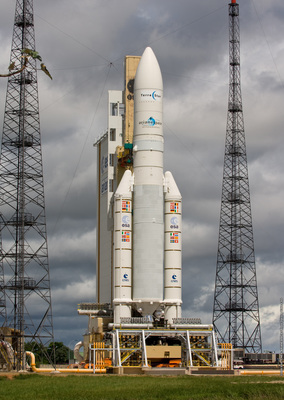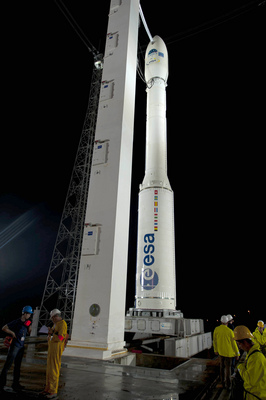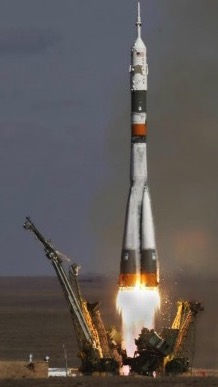THE ARTIFICIAL SATELLITES
The artificial satellites orbit around the Earth in polar or geostationary orbits.
A satellite remains in orbit around the Earth due to the balance between the Earth's gravitational force on the satellite and the centrifugal force of the rotation of the satellite around the Earth.
The gravity force of the Earth on a satellite is inversely proportional to the square of the distance between the Earth and the satellite, while the centrifugal force increases with its orbital velocity. There is a direct link between the satellite's distance from the Earth and its orbital velocity. In fact, a satellite, that orbits around the Earth at a low distance, experiences a strong attractive gravity force and consequently it has to move, for that distance, with a high velocity, adequate to generate a centrifugal force capable to balance the gravity force of the Earth.
This is true if the satellite is in vacuum; it means that the satellite must have a distance from the Earth such that the atmosphere braking effect can be neglected. Otherwise, the satellite would loose speed because of friction and it would fall, ultimately, on the Earth.
The satellites are placed into orbit by launchers. Examples of modern launchers are:
Ariane 5 for positioning the satellites in geostationary or polar orbits.
 Ariane
5 ECA V189 launcher is readied for lift-off
(Credits:
ESA/CNES/ARIANESPACE – Photo Optique Video CSG, 2009).
Ariane
5 ECA V189 launcher is readied for lift-off
(Credits:
ESA/CNES/ARIANESPACE – Photo Optique Video CSG, 2009).
Vega for transporting small loads (300 – 2000) kg in low orbits or polar sun – synchronous orbits.
 Vega
VV01 ready for launch
(Credits:
ESA – S. Corvaja, 2012).
Vega
VV01 ready for launch
(Credits:
ESA – S. Corvaja, 2012).
Soyuz for launching intermediate loads in low orbits and geostationary orbits.

|
Find out more about the Ariane 6 launch vehicle, a European Space Agency (ESA) program, developed by ArianeGroup (Arianespace's parent company) and its European industrial partners: |
ESA - Ariane 6: Ariane 6Arianespace : ARIANE 6NASA SPACEFLIGHT: Ariane 6 undergoing preparations for its 2022 debut |